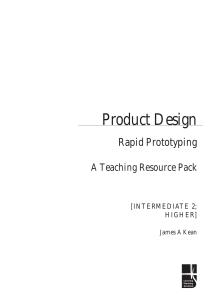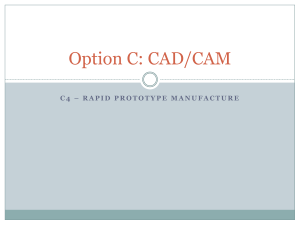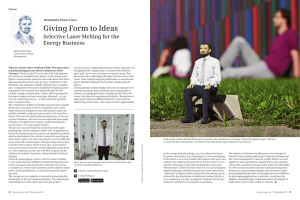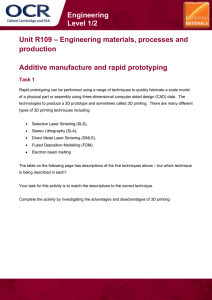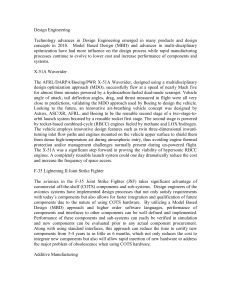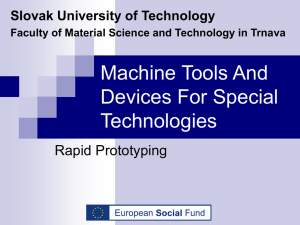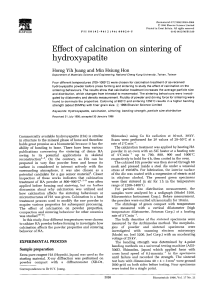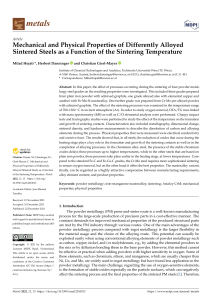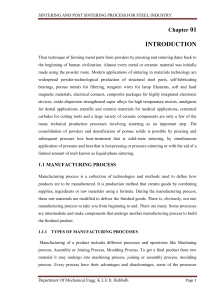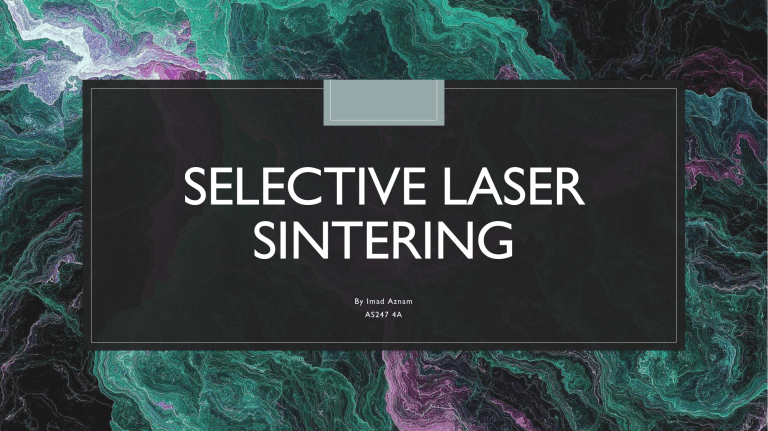
SELECTIVE LASER SINTERING By Imad Aznam AS247 4A Rapid prototyping A fast fabrication of physical parts, model or assembly using 3D computer aided design (CAD) Usually completed using additive manufacturing Commonly known as 3D printing Rapid prototyping ◦ Other technologies used for RP includes high-speed machining, casting, molding and extruding ◦ Other conventional process for RP are: ◦ Subtractive: block of material is carved to produce desire shape using milling, grinding or turning ◦ Compressive: material is forced into desired shape before solidified with casting, compressive sintering or molding SELECTIVE LASER SINTERING ◦ An additive manufacturing technique that uses laser as power source ◦ Used to sinter powdered material ◦ Binds material together to create solid structure ◦ A relatively new technology that mainly used for rapid prototyping and low-volume production MATERIAL USED ◦ Quality of printed structures depends on various factors including material used to make the product ◦ Material used are in powder form ◦ The materials are – polyamides(PA), polystyrene(PS), thermoplastic elastomers(TPE) and polyaryletherketones(PAEK). ◦ The most commonly used material in the idustries is polyamides(PA). PROCESS VIDEO PROCESS • How does Selective laser sintering works https://youtu.be/ruvRijM7f50 ADVANTAGES OF SLS High level resolution Fast turnaround times Fantastic mechanical properties High strength and stiffness Wide selection of materials DISADVANTAGES OF SLS ◦ 3D prints are brittle in nature ◦ Post-processing procedures are difficult PRODUCT SAMPLES CONCLUSION ◦ For product teams, rapid prototyping may be a huge time saver and crisis avoider. Product managers have qualitative confirmation of their assumptions or unambiguous signs that revisions are necessary with reliable input from users interacting with prototypes. All of this helps to lessen the chances of the final product falling short of expectations.
